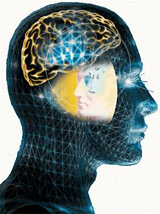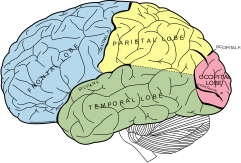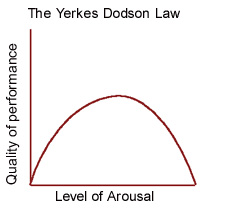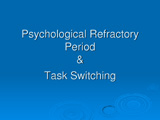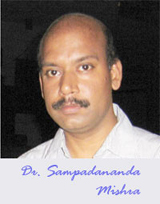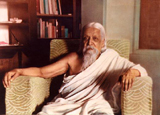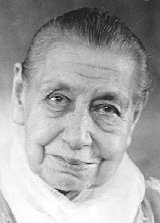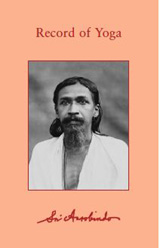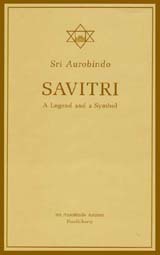Medical research
On Multi-tasking, avadhāna-kalā and multiple saṁyama
Editor's note
Man is a bundle of habits on one side and, on the other, a reservoir of unrealised possibilities. While much present- day science deals with man as he presently is, yogic science deals with man as he can become. Thus yogic science, in a way, is the science of man’s latent evolutionary possibilities that await discovery through systematic effort. The capacity of multiple concentration is one among many other possibilities that open their doors to seekers on the path of yoga. How does modern science view this? This is the subject of the article.
Introduction
You can drive a car while listening to a song, but when you want to see better, you instinctively lower the radio volume in the car. You can listen to a melody while doing chores, but when you want to hear better, you inevitably stop and squint your eyes. The American President Lyndon Johnson once claimed that his political opponent Gerald Ford could not pass wind and chew gum at the same time (1). Such quotidian observations seem to suggest that there may be some natural constraints in our ability to do multiple tasks simultaneously.
For the past few decades, cognitive psychologists have been tormenting volunteers in order to quantify the human capacity for multi-tasking. In ancient India, the method of “avadhāna-kalā” or ‘art of concentration’ was developed to memorise the Vedas. Sri Aurobindo alluded to the power of multiple saṁyama (concentration) in a few essays as well as personal diary notes. This article is a broad survey of this fascinating topic.
Cognitive psychology
Cognitive psychologists have conducted numerous experiments, mostly dual-task and some more complex, to quantify the human capacity for multi-tasking (also referred to as ‘divided attention’, as opposed to ‘focused attention’). Instead of poring over the arcane details of these tedious experiments, the general scenario can be illustrated using some tests conducted on a professional pianist by NPR (National Public Radio, an American media organisation). This is the account from their website:
“We brought a professional pianist into the studios here at NPR. A musician like Jacob Frasch has a lot in common with an experienced driver. Both can do a complex task that has become automatic while carrying on a simple conversation.
“For over an hour, we tasked Frasch with playing a range of pieces, some he knew and some he had to sight-read. While he was playing, we asked him to multitask. Sometimes the additional work was simple. For instance, Frasch had no trouble talking about his childhood while playing a Bach minuet. But when the challenges took more brain power, it was tougher for Frasch to answer questions and play the piano at the same time.
“We asked Frasch to play a Brahms piece he knows by heart, while reading from a magazine article that we placed in front of him.
[...]
“Indeed, while his fingers sounded out Brahms, Frasch stumbled on some words in the magazine article, but recovered nicely — like a driver on a cell phone who drifts into another lane for a moment.
[...]
“So we took it up another notch. We gave Frasch a piece of music he’d never seen before, a fast-tempo number. While he was sight-reading, like a driver navigating an unfamiliar route through a big city, we asked him to do a math problem:
‘What’s 73 minus 21?’
“Frasch played on while he thought through the problem out loud. He hit a few wrong notes on the keyboard before coming up with the right answer: 52.
Neuroscience studies using brain scans have shown that the brain struggles with paying attention to sights and sounds simultaneously. When the brain starts working on a visual task, its auditory parts show decreased activity, and vice versa (2).”
Scientists have conducted numerous such studies and discovered that dual-task performance is indeed limited. ‘Dual-task’ is the technical term for the simplest multi-tasking experiment in which two tasks have to be done simultaneously by the volunteer subject.
Generally speaking, there are three main factors that affect dual-task performance:
1. Similarity:
Two tasks can interfere with each other if they are using the same sense medium for input or output. For example, if both tasks require reading as input to the task, this is denoted as stimulus similarity and if both tasks require hand movement to complete the task, it is called ‘response similarity’.
2. Practice:
Researchers have found that practice reduces interference between tasks. There are three reasons for this phenomenon. First, participants develop new strategies to minimise task interference. Secondly, as the task becomes automatic, it reduces the demand on higher order cognitive skills by relying locally on motor skills, i.e. hands instinctively do the work without involving major portions of the brain. Thirdly, practice reduces the number of resources within the human consciousness.
3. Difficulty:
Performing two tasks at once places new demands on co-ordination within the brain. There is ample evidence that interference between tasks is task-specific. More complex tasks increase the interference and reduce performance (3).
While the factors that give rise to multi-tasking limitations are discernible, several difficulties accompany any attempt to characterise the precise cognitive demands placed by individual tasks in a multi-tasking environment:
• How does one define an independent measure for task difficulty, given that task interference has been found to be task-dependent?
• Given a particular task, how predictable is the next input that you are going to receive? This is known as ‘redundancy’ (a concept borrowed from information theory) and it needs to be quantified for each task.
• Does the task require continuous or sporadic attention? How does one define the quantum of attention a task requires?
• Specialised skills are problematical to quantify. Some people are good at certain activities while others are not.
• Are there any privileged loops within the human processing system? For example, we have a tendency to vocalise anything we hear (referred to as ‘speech shadowing’). It is quite easy to perform this task while doing other tasks.
• Scientists have found that as arousal increases, performance increases, up to an optimum level, beyond which further increases in arousal, rather than improving performance, can degrade it. This is known as ‘Yerkes-Dodson law’ (4).
A rigorous model of the mind has to be developed to explain all the studies conducted so far. One must be able to model enduring dispositions, momentary intentions, level of arousal, as well as the hierarchical processing (sense input – brain action – motor response) which occurs within the human body.
There are two main types of theories that have been proposed to explain the peculiarities of the human multi-tasking system: those which model attention as a single channel versus those which model attention as a resource or capacity which can be flexibly allocated to various tasks.
The earliest theories of multi-tasking assumed that there was a central processor with limited resources in the brain. If the combined demands of two tasks did not exceed the total resources of the channel, the two tasks would not interfere with each other. A common metaphor in these theories was the concept of a bottleneck. Those who regard attention as a single channel have conducted experiments to isolate and measure the bottleneck. Is the bottleneck strategic (task-related) or structural (inherent)? Is there one bottleneck or are there many?
Many studies have found evidence of the ‘psychological refractory period’ (PRP), which is the technical term used to denote the marked slowing which occurs in the response to the second stimulus when two stimuli are presented in rapid succession. According to the central bottleneck theory, this implies that there is a bottleneck somewhere in the processing system which makes it impossible to make two decisions at the same time.
The theories of the second type which model attention as a resource typically assume that there is a pool of resources which can be flexibly allocated to various tasks. Dual-task performance in this scenario is constrained by overlaps between resource allocations.
Triesman (1980) proposed the feature-integration theory, which has since undergone several iterations. According to this model, we sometimes use distributed attention and on other occasions, use focused attention. Furthermore, distributed attention and focused attention form a continuum, so that you frequently use a kind of attention that is somewhere between these two extremes.
1. Distributed attention allows you to register several features across your vision auto-matically; you use parallel processing across the field, registering all features simultaneously. This is a relatively low-level kind of processing.
2. Focused attention requires serial processing. This more demanding kind of processing is necessary when the objects are more complex (5).
Baddeley (1986) proposed a synthesis of multiple resource and central capacity notions. According to him, there is a hierarchical structure. The central executive is at the top of the hierarchy, and is involved in control and coordination behaviour. Below this level, there are specific processing mechanisms which can operate relatively independently of each other (6).
Over the last couple of decades, advances in imaging technologies have allowed neuroscientists to pinpoint precise areas of the brain which are activated during various tasks. They have shown, among other things, that the prefrontal cortex and anterior cingulate are highly active only during dual-task execution. The importance of this finding is that these areas of the brain are associated with attentional and other related processes (7).
This section presented a quick overview of developments in the field of neuro-psychology on the topic of multi-tasking or divided attention. For a detailed discussion, see (3-6) as well as the Wikipedia article on ‘Attention’.
Avadhāna-kalā (art of concentration)
The development of multiple concentration skills seems to have a long history in India.
According to Sampadananda Mishra, a Sanskrit scholar at the Sri Aurobindo Society in Pondicherry, the emphasis on multiple concentration began in the context of the transmission of Vedic scriptures (8). Vedic scholars were notoriously averse to transmitting the scriptures through the written medium. Instead, they would induct young disciples who would spend years orally memorising the scriptures through recitation. As part of this memorisation process, the disciples had to perfect and display various feats of concentration. Later, these avadhānas (feats of concentration) were incorporated into the poetic tradition and became a literary activity or sport. In an avadhāna, a person is expected to simultaneously cogitate and answer questions on a variety of topics related to literature, music, astronomy, medical science and more. A few ancient practitioners who have been identified from various scriptures are Pradhayamatrudu(13-14th C.E.), Cherugundu Dhmanna (16th C.E.), Ramarajbhusanadu (1557 C.E.), Rambhadramba (1520 C.E.), Chintapalli Chhayapati (1650 C.E.) and Prativadabhayankara Raghavacharya (1760 C.E.). During the 19th century, the art of avadhāna flourished with practitioners such as Mandavasri Kashi Krishnacharyalu (1807-1873), Vasishtha Kavyakantha Ganapati Muni (1878 to 1936), a disciple of Ramana Maharshi, and Shri Raichandbhai Ravjibhai Mehta (1867-1901), who was a close associate of Mahatma Gandhi.
There were many types of avadhānas which have been developed, depending on the number of examiners and the types of questions which are posed to the subject. If there are eight examiners, it is called aṣṭavadhāna (aṣṭa = eight in Sanskrit). In one test, bells of different metals and sizes are used to test the ability of concentration of the subject. By listening to the sound of the bells, the avadhānī has to point out the bell which was rung. In another test, the movements of hands, eyes and snapping of the thumb are the means used by the questioners. He shows his hands or eyes in a particular way to convey a particular meaning. The subject must follow the movements and recount at the end that which was expressed by the questioner. Similarly in choṭikāvadhāna, everything is expressed by the snapping of the thumb. In the case of nāṭyāvadhāna the avadhānī is asked to compose dialogues describing a particular scene and then to enact them. caturaṇgāvadhāna is concerned with chess, gaṇitāvadhāna deals with mathematics and in sabdavadhāna different sounds are taken for the feat. Other tasks include composing verses with or without certain letters, non-stop versification at high speed, playing chess, counting the irregular rings of the bell or the number of flowers thrown on the back.
Unlike the studies conducted by psychologists, no scientific testing has as yet been conducted to quantify the cognitive challenges exerted during these multi-tasking activities.
Sri Aurobindo and the Mother
In this section, we will cover some observations made by Sri Aurobindo and the Mother on multi-tasking, but before that, a general overview of the changes which occur in the human consciousness due to yoga is in order.
The ordinary consciousness is a mixture of the three guṇas (modes of nature) — sattva, rajas and tamas, due to which we alternate between phases of excitement, motivated work, ennui, depression and fatigue. The practice of yoga is said to transform the human consciousness, making it more illuminated, thereby increasing our awareness and power of concentration. The yogī who attains Self-realisation is supposed to attain freedom from body-identification (i.e. Dehātma-Buddhi). He or she gains the ability to keep the consciousness concentrated above the head at the Sahasraara cakra. The ordinary rational mind holds a representation of the physical world in the form of fragmentary images which it processes in a sequential fashion in order to arrive at partial conclusions. This form of processing is disrupted as the consciousness becomes centered above the head. The newly-awakened luminous mind discards the fragmentary images and obtains a direct perception of reality; it acts not sequentially but through a comprehensive, all-knowing wisdom.
Hands can become conscious
In the first section of this article, we read that diligently practicing a task enhances motor skills and reduces the higher cognitive cycles required by individual tasks. According to the Mother, the underlying reason for such improvements is that the limbs themselves have a separate consciousness which can be developed gradually:
“When you do music or when you do painting, you very clearly notice how the consciousness permeates the cells and those cells become conscious. This experience, for instance: there are objects in a box, and you say to your hand, ‘Take twelve of them.’ The hand goes like that, without your bothering about it, and it finds the twelve (without counting, just like that), it takes the twelve and gives them to you. That’s an experience I had long ago; when I was twenty I began with experiences of that kind. So I know, I knew how the consciousness works. You understand, it’s impossible to learn the piano or painting without the consciousness coming into the hands, and the hands become conscious INDEPENDENTLY of the brain — the brain may be busy elsewhere, it doesn’t matter in the least. Besides, that’s what happens in those people who are called ‘sleepwalkers’: they have a consciousness belonging to their body, which makes them move about and do things quite independently of the mind and the vital (9).”
According to Sri Aurobindo, there is a deeper power of consciousness called saṁjñāna which actuates the sense-mind (manas). This power, which is superior to the particular action of the senses, can become aware of material things even without imaging them in forms of sight, sound, and contact (10). If we go by the insights of Sri Aurobindo and the Mother, it is because of this augmentation of consciousness within the hands that the pianist (in the NPR test described in the first section) was able to continue playing the piano effortlessly even while being engaged in mental calculations.
Power of multiple concentration (saṀyama)
In an essay written in 1910 after he had attained Self-realisation, Sri Aurobindo alluded to the possibility of developing the power of multiple concentration:
“When people talk of concentration, they imply centering the mind on one thing at a time; but it is quite possible to develop the power of double concentration, triple concentration, multiple concentration. When a given incident is happening, it may be made up of several simultaneous happenings or a set of simultaneous circumstances, a sight, a sound, a touch or several sights, sounds, touches occurring at the same moment or in the same short space of time. The tendency of the mind is to fasten on one and mark others vaguely, many not at all or, if compelled to attend to all, to be distracted and mark none perfectly. Yet this can be remedied and the attention equally distributed over a set of circumstances in such a way as to observe and remember each perfectly. It is merely a matter of abhyāsa or steady natural practice (11).”
About eight years after he wrote this essay, Sri Aurobindo himself seems to have developed some such power because we find several references to the power of multiple concentration in his spiritual diary, Record of Yoga. I am reproducing these entries in chronological order:
May 15, 1918:
“The power of simultaneous attention is now rapidly developing; it is seen that the thought in the ideality can easily be conducted and even more successfully conducted, when the mind is not absorbed, and can ordinarily coexist with the sense of the Ananda, especially the ideation and speech thought (this most, because it is most assured,) but also the T2 [telepathy and trikāldṛṣti]. The gathering together of the mind stuff and the closing of it to other ideas and objects which is the nature of absorption, is no longer necessary for the full force of the thought to reign. The habit still continues, but it is diminishing and has received its death blow. On the other hand when the thought is occupied not only with itself, but with the object of sense or in some action, as in reading, writing, conversing, this gathering and closing is more ready to intervene. Here also, how-ever, there is a strong beginning and already a rapid growth of the elimination (12).”
May 18, 1918:
“Power of double attention, to thought and to Ananda, is now well-established. What has now to be got rid of, is the interference of the mind-stuff in condensation; this is being already done initially by the interposition making no essential difference, since even then the Ananda reaches the side of conscious attention, subordinate as yet, which is deputed to receive it. But this siddhi [occult power] is as yet imperfect and initial (13).”
25th June. 1919:
“Forgetfulness is being attacked and when the Ananda is in flow, there is usually a second memory in the body which retains it in various degrees of intensity or at least so keeps it that it is felt when the mind returns to some partial attention. Absorption now for the same reason does not necessarily bring discontinuity. Two movements are being carried on, (1) removal of exclusive absorption, the simultaneity of a double memory or concentration, (2) the inability of absorption to bring about complete discontinuity. These siddhis formerly only hinted at or momentarily accomplished, are now beginning to establish themselves, however imperfectly. Old occupations which excluded memory of K A [Kāmānanda: physical bliss] are now admitting it, eg reading, writing, bathing, eating. There are two absorptions, the luminous concentration and the tamasic ‘absence’ of the part of the mind not occupied in the particular work; the latter is the only real difficulty; it is not really an absence, but an involution in tamas, a sort of cloud of inertia, which is physically sensible all about the brain or near it (14).”
10 July, 1919:
“The obstacle to the memory is the clouding of a certain substance of mentality which gets into the way of the rest of the consciousness: the ideality can concentrate completely on thought the power of thought and yet have plenty of power of attention for other simultaneous experience; this is the principle of multiple concentration in a general embracing infinite consciousness, the divine vijnana [gnosis] (15).”
11 July 1919:
“In that mentality there is the absorption of the mind in the thought because it has to listen and attend, the limited concentration, the forgetfulness of other things. The gnosis illumines easily without need of this strenuous concentration; it is capable of a multiple concentration. When the ideality is at work and the system full of the ideality, then the K.A [Kāmānanda physical bliss] proceeds without any but momentary lapses into oblivion (16)”.
Aug 11, 1919:
“Absorption of thought also no longer imposes oblivion, except when there is this loose distraction or pramada of the channel mind in the physicality. Absorption in the object is at best only momentarily discontinuative; absorption of reading or writing only when extreme by necessity of attention; but this necessity is no longer really existent, since the gnosis is capable of a wide and multiple dhyana. In the reading it is almost eliminated as a necessary factor, in the writing it is on the point of elimination. The one thing now really to be conquered is the loose mental distraction, a habit and not a necessity of the system (17).”
March 3, 1920:
“Nevertheless the ideal form is growing in power. Thought and writing no longer interfere necessarily with the body’s smarana [remembrance], but only when there is a total absorption in the writing etc or when a cloud of mental stuff comes in to interpose an element of the old formless abstraction of mind which attended absorption in a single subject or occupation. This is no longer a necessity, but a survival of habitude. The continuity has begun to prevail in this matter. The pervasiveness of the Ananda is also being prepared on a firmer foundation. And now even the cloud of mental abstraction no longer necessarily interrupts the ananda. It is only the exclusive absorption that is the ordinary obstacle (18).”
“His wakened mind became an empty slate
On which the Universal and Sole could write.
All that represses our fallen consciousness
Was taken from him like a forgotten load:
A fire that seemed the body of a god
Consumed the limiting figures of the past
And made large room for a new self to live.
Eternity’s contact broke the moulds of sense.
A greater force than the earthly held his limbs,
Huge workings bared his undiscovered sheaths,
Strange energies wrought and screened tremendous hands
Unwound the triple cord of mind and freed
The heavenly wideness of a Godhead’s gaze.
As through a dress the wearer’s shape is seen,
There reached through forms to the hidden absolute
A cosmic feeling and transcendent sight.
Increased and heightened were the instruments (19).”
Cognitive psychologists have found that there are inherent limitations in the human capacity for multi-tasking and this is quite obvious in our daily lives. Based on Sri Aurobindo’s observations, it may be possible to transcend these limitations when the consciousness is liberated from body-identification and begins to operate from the Sahasrāra cakra. Needless to say, one would have to reach a state of Self-realisation (and maybe progress further into what he called the Supramental consciousness) in order to independently verify his observations. Until then, these are just stimulating possibilities from which we can take heart even while we remain inextricably shackled to our mundane existence.
References
1. Crain, A.D. The Ford Presidency, Jefferson, NC; McFarland, 2009, p. 38.
2. Hamilton, J. “Multitasking in the car: just like drunken driving.” NPR, October 16, 2008. (http://www.npr.org/templates/story/story.php?storyId=95702512).
3. Eysenck, M.W., Keane, M. Cognitive psychology: a student’s handbook, Hove (UK); New York Psychology Press, 2005, pp. 170-84.
4. Styles, E. Psychology of Attention. Hove (UK); New York Psychology Press, 2006, pp. 152-80.
5. Matlin, M. Cognition. Hoboken, N.J; Chichester John Wiley, 2009 (7th ed.), pp. 66-85.
6. Ibid.
7. Eysenck, M.W. Fundamentals of cognition, Hove (UK); New York Psychology Press, 2006, pp. 127-40.
8. Mishra, S. Avadhanakala — The Art of Concentration (unpublished).
9. The Mother. Mother’s Agenda, Volume 8. Paris; Institut de Recherches Évolutives, 1980, p. 381.
10. Sri Aurobindo. CWSA, Volume 18. Pondicherry; Sri Aurobindo Ashram Trust, 2001, p. 56.
11. Op. cit. CWSA, Volume l. Pondicherry; Sri Aurobindo Ashram Trust, 2003, p. 403.,/
12. Sri Aurobindo. Record of Yoga II, CWSA, Volume11. Pondicherry; Sri Aurobindo Ashram Trust, 2001, p. 1072.
13. Ibid., p. 1076.
14. Ibid., pp. 1097-98.
15. Ibid., p. 1117.
16. Ibid., p. 1119.
17. Ibid., p. 1167.
18. Ibid., p. 1205.
19. Sri Aurobindo. Savitri, SABCL, Volume 28. Pondicherry; Sri Aurobindo Ashram Trust, 1970, pp. 81-2.
Sandeep Joshi is a computer engineer currently living in the India. He writes an Integral Yoga blog at http://www.auromere.wordpress.com
Share with us (Comments, contributions, opinions)
When reproducing this feature, please credit NAMAH, and give the byline. Please send us cuttings.

